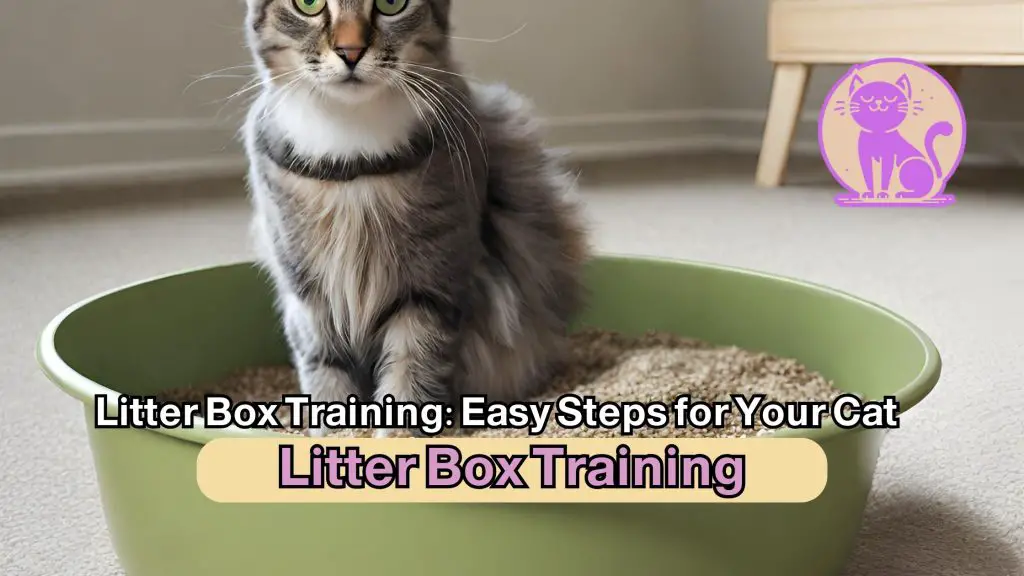Before you start training, it’s important to understand why litter box training is crucial for your cat’s well-being. A well-trained cat benefits both you and your feline friend. By teaching your cat to use the litter box, you ensure a clean and hygienic environment, prevent accidents and odors, and foster a harmonious living space for everyone.
Remember to be patient and consistent during the training process. Each cat is unique and may require different techniques. Observe your cat’s behavior, provide positive reinforcement, and tailor the training to their individual preferences. By following these simple steps, you can ensure successful litter box training for your beloved feline companion.
| Benefits of Litter Box Training |
|---|
| Eliminates odors and maintains a clean home environment |
| Prevents accidents and eliminates the need for cleanup |
| Promotes good hygiene and prevents the spread of diseases |
| Creates a stress-free environment for your cat |
| Enhances the bond between you and your cat |
Choosing the Right Litter Box and Litter
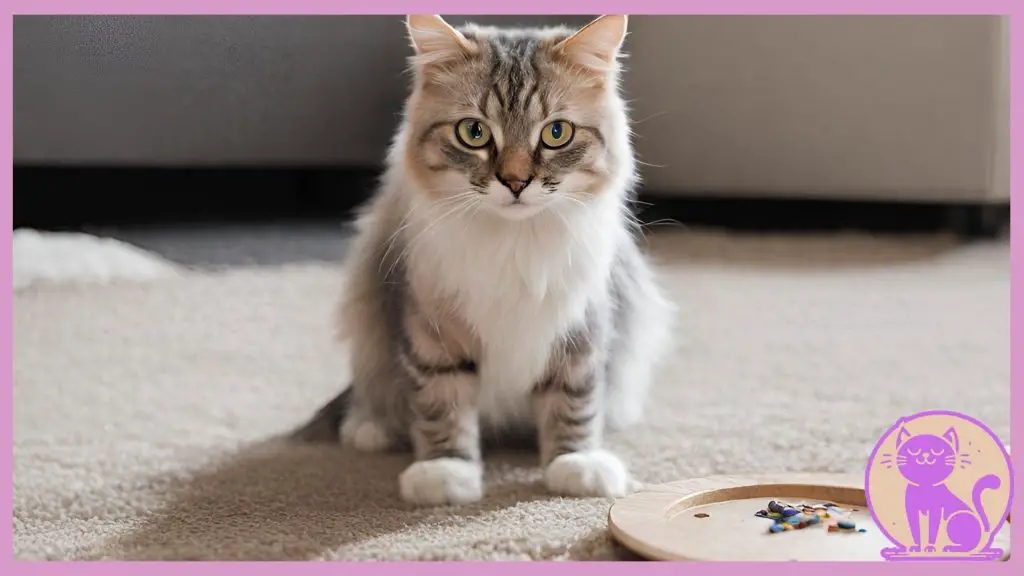
1. Size Matters
The size of the litter box plays a significant role in your kitten’s litter training. The box should be large enough to allow comfortable movement and give your cat room to dig and bury waste. Look for a box that provides ample space for your kitten to grow into as they get older. As a general rule, a litter box should be 1.5 times the length of your cat from nose to tail.
2. Privacy and Accessibility
Kittens value their privacy when using the litter box. Choose a box with high walls or a cover to give your kitten a sense of security. Additionally, make sure the entrance is low enough for easy access, especially for young or elderly cats. Consider a litter box with a removable lid or a large opening if your kitten prefers a more spacious and open area.
3. Material Matters
When it comes to litter box material, opt for a durable and easy-to-clean option. Plastic litter boxes are widely available and affordable. They are also lightweight and resistant to odor. However, some cats may develop allergies or sensitivities to certain plastics. If your kitten shows signs of discomfort, consider switching to a stainless steel or ceramic litter box.
4. The Perfect Litter
Choosing the best litter for training cats depends on your kitten’s preferences and your personal preferences as the owner. The market offers a wide range of options, including clay, crystal, and paper-based litters. Consider the following factors when selecting the ideal litter:
- The litter should clump well and be easy to scoop.
- Absorbency is crucial to effectively contain odors.
- Some litters have additives that control bacteria growth and odor.
- Consider dust-free options to minimize respiratory irritation.
- Take note of any allergies your kitten may have to specific litter materials.
Experiment with different litters to find the one that your kitten prefers. Start with a small amount of litter in the box and observe their reaction. You can gradually increase the quantity as your kitten becomes more comfortable.
5. The Placement Puzzle
Choosing the right location for the litter box is essential for successful litter training. Opt for a quiet and easily accessible area of your home. Avoid placing the litter box near noisy appliances or in high-traffic areas to ensure your kitten feels safe and undisturbed while using it.
| Litter Box Type | Pros | Cons |
|---|---|---|
| Open Box | – Provides easy access for kittens. – Offers better ventilation to reduce odors. – Allows easy monitoring of litter cleanliness. | – Litter may get kicked out during digging. – Not ideal for cats who prefer privacy. |
| Covered Box | – Offers privacy for cats who prefer it. – Controls litter scatter. – Helps contain odors. | – May feel confining or claustrophobic for some cats. – Requires regular cleaning to prevent odors from building up. |
| Top-Entry Box | – Provides privacy for cats. – Reduces litter scatter. – Prevents dogs or young children from accessing the litter. | – May be challenging for kittens or elderly cats to enter. – Some cats may not like the enclosed feeling. |
Remember, every cat is different, so be observant and adaptable throughout the litter training process. By choosing the right litter box and litter, you’re setting the stage for successful kitten litter training and fostering good litter box habits that will continue into adulthood.
Introducing Your Cat to the Litter Box
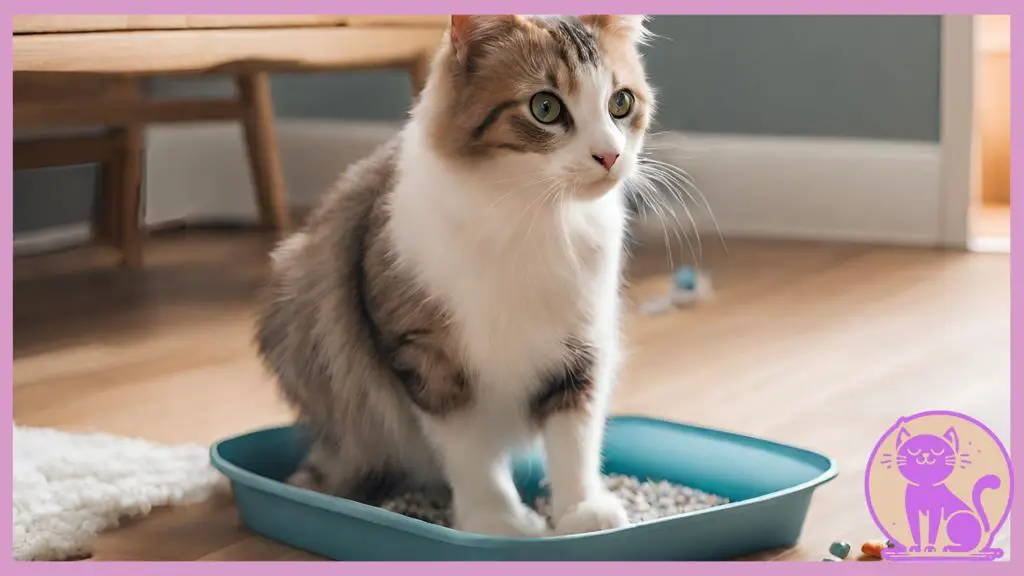
Now that you understand the importance of litter box training for your cat’s well-being, it’s time to dive into the initial steps of introducing your furry friend to the litter box. By following these simple techniques and creating a positive association, you can successfully train your cat to use the designated area.
1. Choose the Right Location
Start by selecting an appropriate location for the litter box. Choose a quiet and easily accessible spot in your home, away from busy areas and loud noises. Cats prefer privacy, so ensure the litter box is placed in an area where they can feel comfortable and undisturbed.
2. Set Up the Litter Box
Select a litter box that suits your cat’s size and preferences. Open-top litter boxes are often recommended for easy access. Fill the litter box with a suitable litter that your cat will find appealing. Cats have different preferences when it comes to litter texture and odor, so experiment with different types until you find the one that works best for your feline friend.
3. Gradual Introduction
Introduce your cat to the litter box gradually. Place your cat near the litter box and allow them to explore the area at their own pace. You can gently place their paws in the litter to familiarize them with the texture. Repeat this process several times a day until your cat starts using the litter box on their own.
4. Positive Reinforcement
When your cat uses the litter box, offer praise and rewards to reinforce the behavior. Positive reinforcement can include verbal praise, treats, or gentle petting. This will create a positive association with the litter box and encourage your cat to continue using it.
5. Patience and Consistency
Remember, litter box training takes time and patience. Avoid scolding or punishing your cat if accidents happen outside the litter box.
By following these litter box training techniques, you can ensure that your cat develops good litter box habits and enjoys a clean and stress-free environment. Now that you have successfully introduced your cat to the litter box, it’s time to reinforce these positive habits and establish a consistent routine for long-term success.
Reinforcing Good Litter Box Habits
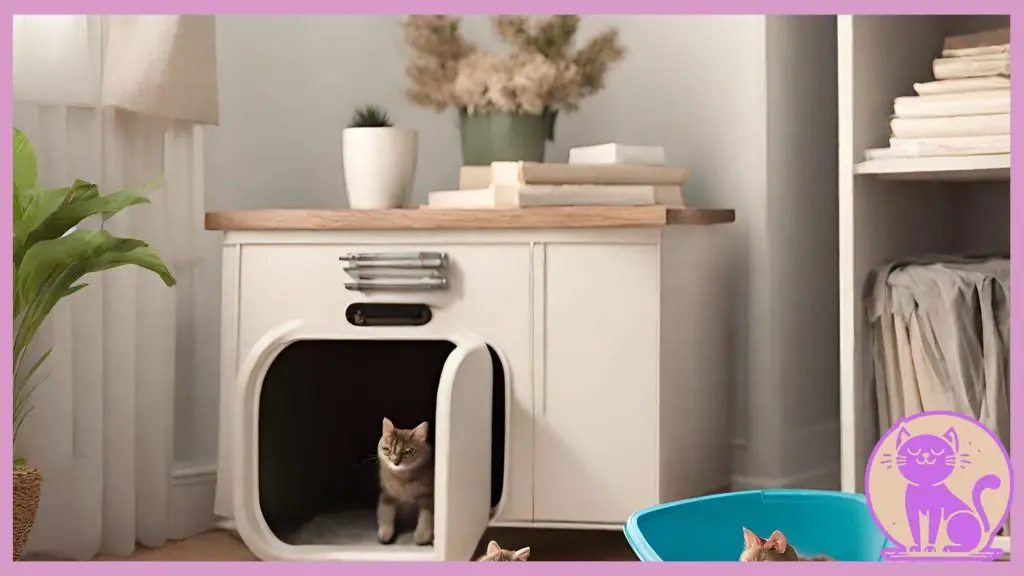
Now that your cat is familiar with the litter box, it’s time to reinforce good litter box habits. Consistency is key in ensuring your indoor cat develops and maintains proper potty training skills. By implementing the following techniques, you can encourage consistent and proper usage of the litter box.
1. Maintain a Clean Litter Box
Regularly cleaning the litter box is crucial for your cat’s comfort and hygiene. Kittens are known for their cleanliness, and a dirty litter box can discourage them from using it. Scoop the litter at least once a day and replace the litter completely every week.
2. Provide Multiple Litter Boxes
If you have multiple cats or a multi-story home, it’s important to have multiple litter boxes to ensure easy access for all your feline friends. Each cat should have their own designated box to prevent territorial conflicts and encourage consistent usage.
3. Positive Reinforcement
When your cat uses the litter box correctly, reward them with praise, treats, or gentle pets to reinforce the behavior. Positive reinforcement creates a positive association with the litter box and encourages your cat to continue using it.
4. Addressing Accidents
If your cat has an accident outside the litter box, refrain from punishment as it can create anxiety and litter box aversions. Instead, clean the accident area thoroughly with an enzymatic cleaner to remove the scent and discourage a repeat occurrence.
5. Seek Veterinary Advice
If you’re facing persistent challenges with your cat’s litter box habits, consult your veterinarian. They can rule out any underlying medical issues that may be causing the problem or provide guidance specific to your cat’s needs.
| Pros | Cons |
|---|---|
| Encourages consistent usage | Accidents may still occur |
| Creates positive association | May require multiple litter boxes |
| Supports cat’s cleanliness | Requires regular cleaning |
| Reinforces established routine | May need to seek veterinary advice |
Dealing with Litter Box Avoidance
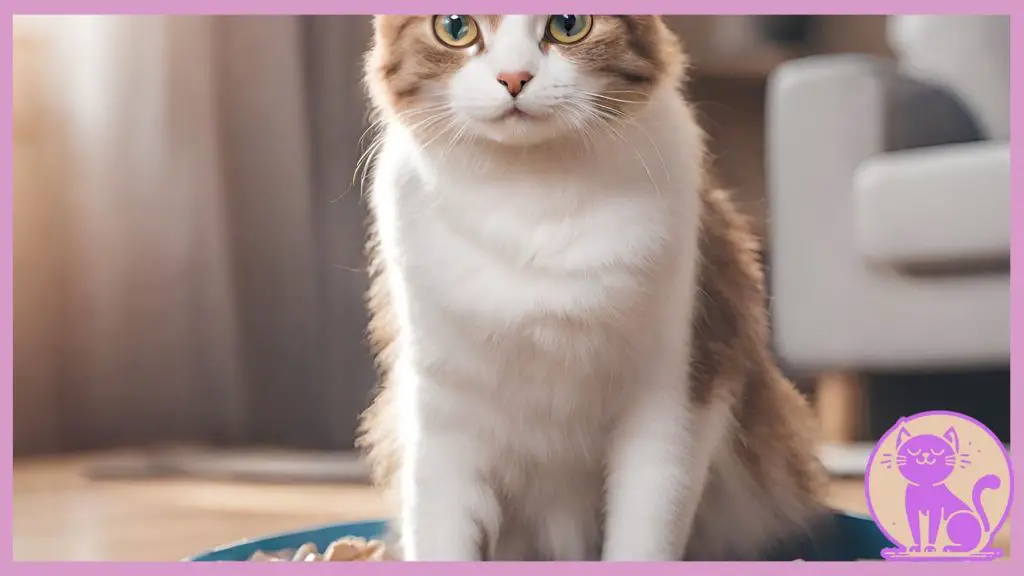
Occasionally, cats may develop an aversion to using their litter box. This can be frustrating for both you and your feline companion, but it’s important to understand the reasons behind this behavior and find solutions to redirect their litter box habits. Here are some common reasons for litter box avoidance and tips to address them:
Misalignment of Preferences:
Cats can be particular about their litter box preferences. If your cat has developed an aversion, it could be due to a dislike of the litter texture, scent, or box type. Experiment with different types of litter and litter boxes to find the ones that your cat prefers. Providing multiple litter box options throughout your home can also help accommodate their preferences.
Dirty or Unappealing Litter Box:
Just like humans, cats prefer using a clean and fresh bathroom. If the litter box is dirty or filled with waste, your cat may avoid it. Make sure to scoop the litter box daily and completely change the litter regularly. Additionally, some cats prefer an uncovered litter box as it provides a sense of security and allows them to easily monitor their surroundings.
Stress or Anxiety:
Cats are sensitive creatures, and stress or anxiety can contribute to litter box avoidance. Major changes in the household, such as moving, introducing a new pet, or a change in routine, can trigger anxiety in cats. Creating a calm and secure environment for your cat can help alleviate stress and encourage proper litter box usage. Provide hiding spots, vertical spaces, and plenty of playtime to help reduce anxiety.
Training Steps to Address Litter Box Avoidance:
- Ensure a clean litter box environment.
- Provide multiple litter box options with different litter types.
- Observe and address any sources of stress or anxiety in your cat’s environment.
- Consult a veterinarian if medical issues are suspected.
- Consult with a professional animal behaviorist for further guidance if needed.
By understanding the reasons behind litter box avoidance and implementing the appropriate solutions, you can help redirect your cat’s behavior and ensure they have a positive litter box experience.
Managing Litter Box Accidents
Accidents can occur during the litter box training process, but don’t worry – with the right approach, you can effectively manage and clean up these incidents. Here are some helpful tips to guide you:
Create a dedicated cleanup kit
Prepare a cleanup kit consisting of gloves, paper towels, pet-safe disinfectant, and a dedicated trash bag. Having these essentials readily available will ensure quick and efficient cleanups.
Act promptly
When accidents happen, it’s crucial to address them promptly. Cats have a strong sense of smell, so removing any traces of odor as soon as possible is essential to prevent repeat incidents.
Remove solid waste
Start by removing any solid waste from the litter box using a scooper or a disposable glove. Make sure to discard it in the appropriate waste bin outside your home.
Clean the affected area
Thoroughly clean the area where the accident occurred using a pet-safe disinfectant. This will help eliminate any lingering odors and prevent your cat from being attracted to the same spot again.
Monitor your cat’s behavior
Keep an eye on your cat’s behavior after a litter box accident. If accidents become frequent or if your cat shows other signs of distress, it’s important to consult with a veterinarian to rule out any underlying health issues.
| Tips for Managing Litter Box Accidents |
|---|
| 1. Create a dedicated cleanup kit |
| 2. Act promptly |
| 3. Remove solid waste |
| 4. Clean the affected area |
| 5. Address lingering odors |
| 6. Monitor your cat’s behavior |
By following these guidelines, you can effectively manage litter box accidents and ensure successful litter box training for your kitten or cat.
Tips for a Clean and Fresh Litter Box

When it comes to litter box training, maintaining a clean and fresh environment is key to your cat’s ongoing success. A dirty litter box can discourage your cat from using it and lead to accidents throughout your home. By following these tips, you can ensure that your cat has a hygienic and inviting space to do their business:
1. Choose the Best Litter for Training Cats
Selecting the right litter is crucial for both your cat’s comfort and your ease of cleaning. Opt for a litter that is highly absorbent, clumping, and virtually dust-free. This will help minimize odors and make scooping and changing the litter a breeze.
2. Maintain Good Litter Box Hygiene
Regularly scooping the litter box is essential to prevent odor buildup and keep it clean for your cat. Aim to scoop the litter at least once a day and remove any clumps or waste. For optimal hygiene, completely empty and clean the litter box every few weeks to prevent bacteria growth.
3. Use Odor Control Products
If you’re concerned about litter box odors, consider using odor control products. Some litters are specially formulated to neutralize odors, while others come with natural deodorizers or additives. Additionally, placing an air freshener or deodorizer near the litter box can help maintain a fresh-smelling environment.
4. Provide Multiple Litter Boxes
If you have multiple cats or a larger living space, it’s recommended to provide multiple litter boxes. Having multiple options ensures that each cat has easy access to a clean and available litter box. Ideally, you should have one litter box per cat, plus an extra.
5. Regularly Replace the Litter
Even with regular cleaning, litter does accumulate odor over time. To maintain a fresh-smelling litter box, it’s important to completely replace the litter every 2-3 weeks, depending on your cat’s usage. This will help keep the litter box inviting and encourage your cat to consistently use it.
By implementing these tips, you can create a clean and fresh litter box environment that encourages your cat’s continued litter box training success. Remember, a happy cat means a clean home!
Consistency and Routine for Long-Term Success
Consistency and routine are crucial factors in ensuring successful litter box training for your cat. By establishing a consistent routine, you create a predictable environment that promotes your cat’s understanding and adherence to their litter box habits. Here are some tips to help you maintain consistency and routine:
1. Set a Regular Feeding Schedule
Feeding your cat at the same time each day helps regulate their digestion and elimination patterns. This, in turn, makes it easier to predict when they will need to use the litter box. Consistency in meals will help your cat develop a consistent routine for using the litter box.
2. Designate a Specific Litter Box Area
Choose a quiet, easily accessible area for your cat’s litter box and ensure it remains in the same location. Cats are creatures of habit, and having a designated area for their litter box helps reinforce their litter box training. Avoid moving the litter box, as it may confuse your cat and disrupt their routine.
3. Regularly Clean the Litter Box
Keeping the litter box clean is essential for your cat’s comfort and hygiene. Regularly scoop out waste and clumps, and replace the litter when needed. By maintaining a clean litter box, you are creating a pleasant environment that encourages your cat to consistently use it.
4. Provide Multiple Litter Boxes
If you have multiple cats or a large living space, it’s advisable to provide multiple litter boxes. Each cat should have access to their own litter box to prevent any territorial behaviors and ensure they have a consistent option available to them at all times.
5. Be Patient and Reward Your Cat’s Success
Litter box training takes time and patience. Encourage your cat’s progress by rewarding them when they successfully use the litter box. Offer verbal praise, petting, or a small treat to reinforce their positive behavior and motivate them to continue their good habits.
By following these tips and maintaining consistency in your cat’s litter box training, you will establish a routine that supports long-term success. Remember, each cat is unique, so be flexible and adapt your approach to suit their individual needs and preferences.
Conclusion
Congratulations! You’ve learned the essential steps and techniques for successful litter box training. By understanding your cat’s needs and providing them with the right litter box and litter, you’ve taken the first important steps towards fostering proper litter habits. Maintaining consistency and routine in your cat’s training will ensure long-term success.
With a well-trained and litter-trained feline companion, you can look forward to a clean and happy home. No more worries about accidents or litter box avoidance. Your cat will appreciate the comfortable and hygienic litter box environment you’ve created, and you’ll enjoy the benefits of a well-behaved pet.
Remember, the key to successful litter box training is patience, positivity, and understanding. Every cat is unique, so it’s important to adapt the training techniques to suit your cat’s personality and preferences. By following the tips and advice in this article, you’ve set yourself and your cat up for litter box training success. Best of luck on this exciting journey with your furry friend!

